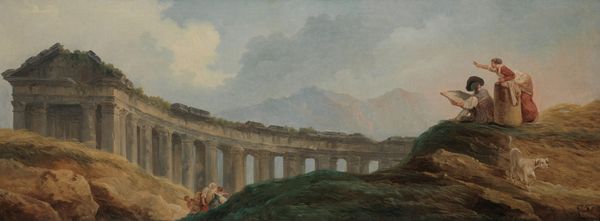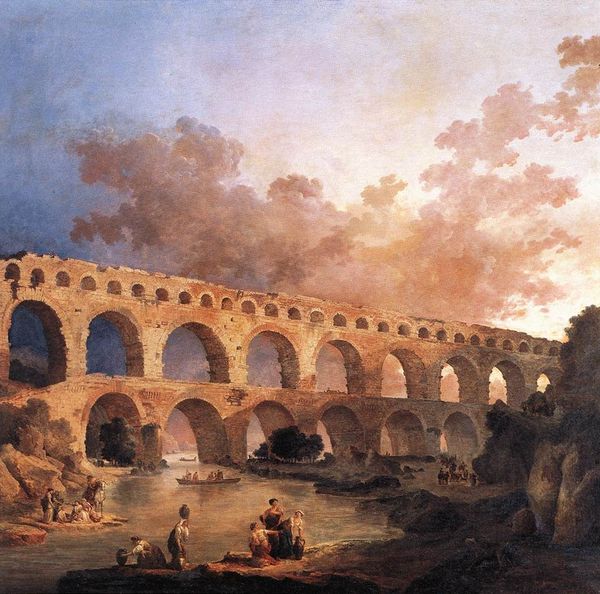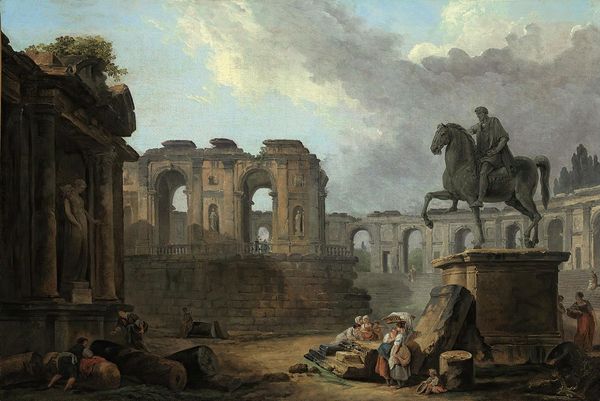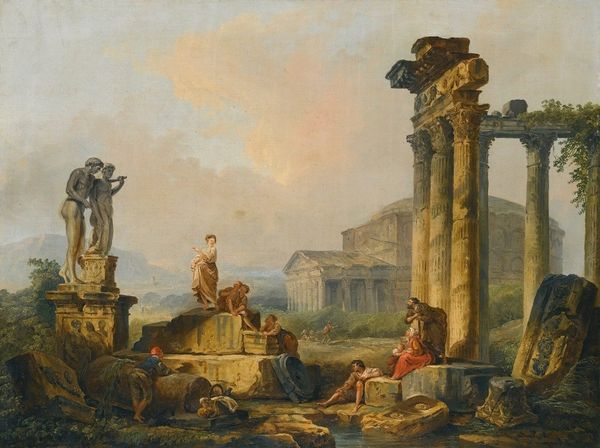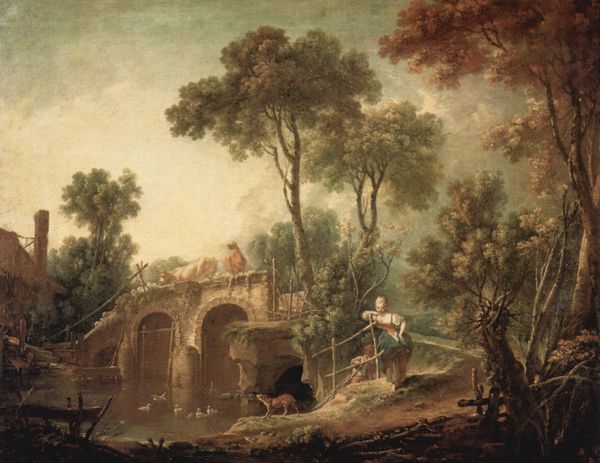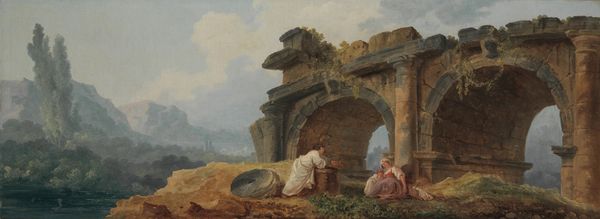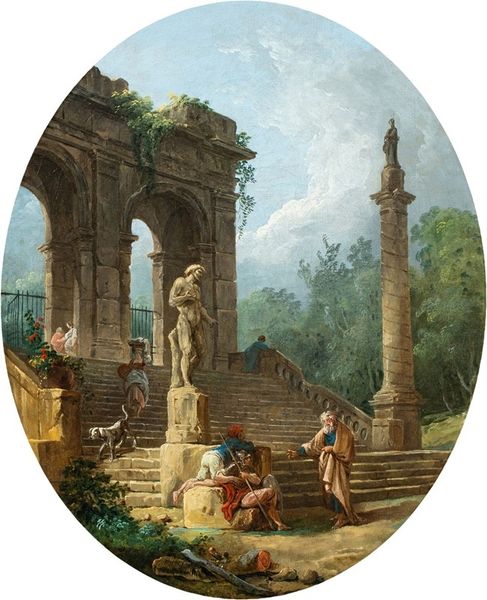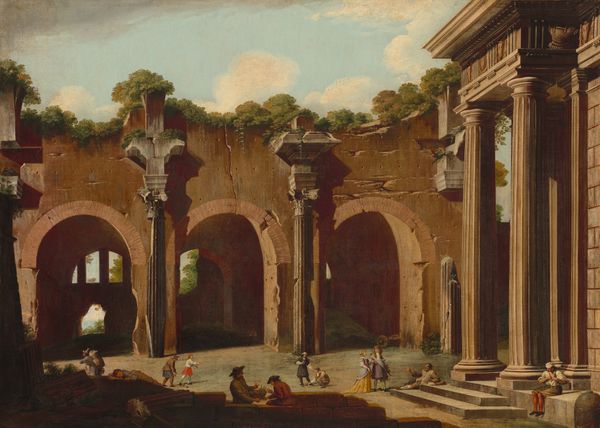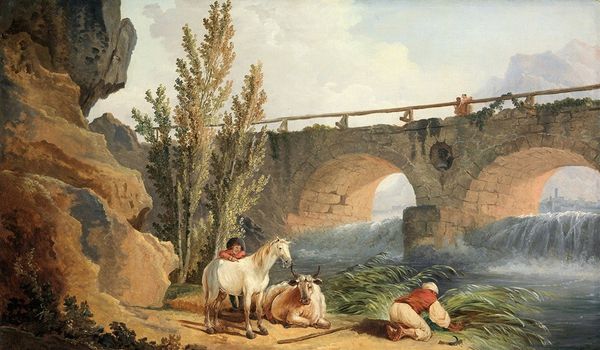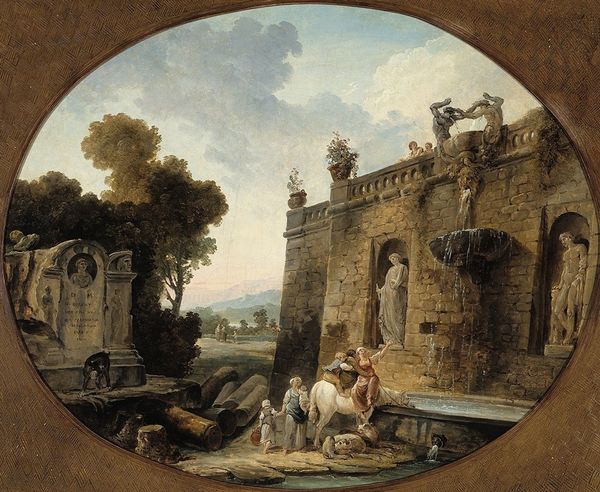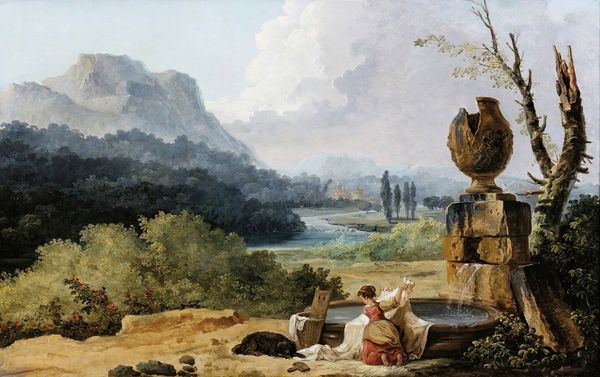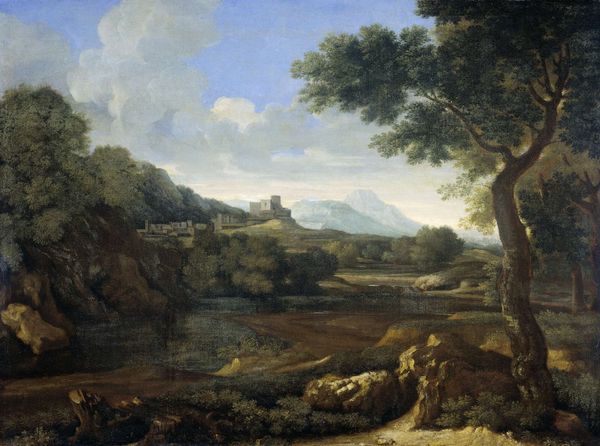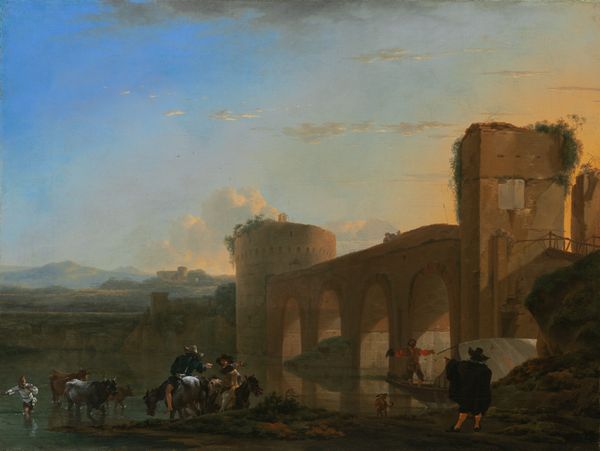
tempera, painting, fresco, watercolor
#
neoclacissism
#
tempera
#
painting
#
landscape
#
fresco
#
oil painting
#
watercolor
#
romanticism
#
cityscape
#
watercolour illustration
#
genre-painting
#
history-painting
Copyright: Public Domain: Artvee
Editor: This painting, “Aqueduct in Ruins,” is by Hubert Robert. The date is unknown, and it seems to combine tempera, fresco and watercolor, which creates a layered effect. I’m struck by how Robert contrasts the grandeur of the ruins with the everyday lives of the people and animals. How do you read this layering of past and present, of artifice and nature, within the structure of the painting itself? Curator: Indeed, the layering is key. Observe how the horizontal thrust of the aqueduct establishes a firm base, almost a stage upon which Robert arranges his figures. Note the use of the rule of thirds. How the statue isn’t in the exact centre, which affects how the aqueduct fades into the misty distance. This subtle staggering creates depth, while the contrasting textures—the rough stone of the ruins against the soft rendering of the sheep—introduce a visual tension that animates the whole. It creates an "eye-break" which is critical for Romanticism. Editor: That makes perfect sense. The shepherd and the sheep in the lower ground create this tension. Curator: Precisely. Consider the framing as well, this isn't casual snapshot photography, it uses formal pictorial language. Also, consider that the arches themselves function as frames within the frame, each offering a slightly different perspective on the landscape. Editor: So, by focusing on these intrinsic visual relationships, the painting reveals its meaning not through narrative, but through its carefully orchestrated composition. Curator: Exactly. And we might add, the ruin suggests history. What do you think it’s doing? Editor: Perhaps emphasizing the passage of time and the power of nature to reclaim even the most impressive human creations. It encourages contemplation. Thanks, that clarifies much more. Curator: Indeed, understanding visual strategies offers the viewer not only the context, but access into the emotional dimensions of art.
Comments
No comments
Be the first to comment and join the conversation on the ultimate creative platform.
